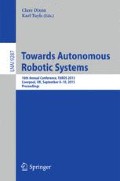Abstract
This paper proposes a technique to extend the endurance of battery-powered rotorcraft by sub-dividing the monolithic battery into multiple smaller capacity batteries which are sequentially discharged and released. The discarding of consumed battery mass reduces the propulsive power required, thereby contributing towards increased endurance. However, the corresponding implementation introduces additional parasitic mass due to the required battery switching and attachment and release mechanism, which, together with the decrease in battery efficiency with decreasing size, results in endurance improvements only being achieved beyond a threshold payload and which scale with rotorcraft size. An endurance model for battery-powered rotorcraft is presented, together with a technique to determine the maximum endurance and corresponding battery combination, by solving the Knapsack Problem by Dynamic Programming. The theoretical upper bound on rotorcraft endurance, which may be obtained from an ideal “infinitely-divisible” battery, is derived from the Breguet-Range Equation. Theoretical derivations and model predictions are validated through experimental flight tests using a popular commercial quadrotor.
Access this chapter
Tax calculation will be finalised at checkout
Purchases are for personal use only
Preview
Unable to display preview. Download preview PDF.
References
Schoemann, J.: Hybrid-electric propulsion systems for small unmanned aircraft. München, Technische Universität München, PhD diss. (2014)
Saadé Latorre, E.: Design Optimization of a Small Quadrotor’s Electrical Propulsion System. Masters diss., Universitat Politècnica de Catalunya (2011)
Pereira, J.L.: Hover and wind-tunnel testing of shrouded rotors for improved micro air vehicle design. PhD diss., University of Maryland (2008)
Dell, R.M., Rand, D.A.J.: Understanding batteries. Royal Society of Chemistry (2001)
Chang, T., Hu, Y.: Improving electric powered UAVs’ endurance by incorporating battery dumping concept. In: 2014 Asia-Pacific International Symposium on Aerospace Technology, APISAT 2014 (2014)
Flight Of The Century. http://www.flightofthecentury.com/
Toksoz, T., Redding, J., Michini, M., Michini, B., How, J.P., Vavrina, M., Vian, J.: Automated battery swap and recharge to enable persistent UAV missions. In: AIAA Infotech@Aerospace Conference (2011)
Mulgaonkar, Y., Kumar, V.: Autonomous charging to enable long-endurance missions for small aerial robots. In: SPIE Defense+ Security, pp. 90831S-1–90831S-15. International Society for Optics and Photonics (2014)
Roberts, J.F., Zufferey, J.-C., Floreano, D.: Energy Management for indoor hovering robots. In: International Conference on Intelligent Robots and Systems, IROS 2008, pp. 1242–1247. IEEE/RSJ (2008)
Mulgaonkar, Y., Whitzer, M., Morgan, B., Kroninger, C.M., Harrington, A.M., Kumar, V.: Power and Weight Considerations in Small, Agile Quadrotors. In: SPIE Defense+ Security, pp. 90831Q-1–90831Q-16. International Society for Optics and Photonics (2014)
Nugent, Jr, T., Kare, J., Bashford, D., Erickson, C., Alexander, J.: 12-Hour Hover: Flight Demonstration of a Laser-Powered Quadrocopter. White Paper (2011), www.lasermotive.com/wp-content/uploads/2010/04/AUVSI-white-paper-8-11.pdf
NASA, Appendix B: Capabilities and Technologies (condensed version), December 2005. http://www.nasa.gov/centers/dryden/doc/139873main_Appendix%20B.doc
Driessens, S., Pounds, P.E.I.: Towards a more efficient quadrotor configuration. In: 2013 IEEE/RSJ International Conference on Intelligent Robots and Systems (IROS), pp. 1386–1392 (201)
Pisinger, D.: Algorithms for knapsack problems, PhD diss. University of Copenhagen, Denmark (1995)
Cormen, T.H., Leiserson, C.E., Rivest, R.L., Stein, C: Introduction to algorithms. MIT Press (2009)
Performance - Range and Endurance. Virginia Tech. http://www.dept.aoe.vt.edu/ lutze/AOE3104/range&endurance.pdf
PARROT ARDrone2.0. http://ardrone2.parrot.com/
Analiza, A., Arthur, R., Stephen, B: Power and Endurance Modelling of Battery-Powered Rotorcraft. Submitted to IROS 2015 (2015)
Author information
Authors and Affiliations
Corresponding author
Editor information
Editors and Affiliations
Rights and permissions
Copyright information
© 2015 Springer International Publishing Switzerland
About this paper
Cite this paper
Abdilla, A., Richards, A., Burrow, S. (2015). Endurance Optimisation of Battery-Powered Rotorcraft. In: Dixon, C., Tuyls, K. (eds) Towards Autonomous Robotic Systems. TAROS 2015. Lecture Notes in Computer Science(), vol 9287. Springer, Cham. https://doi.org/10.1007/978-3-319-22416-9_1
Download citation
DOI: https://doi.org/10.1007/978-3-319-22416-9_1
Published:
Publisher Name: Springer, Cham
Print ISBN: 978-3-319-22415-2
Online ISBN: 978-3-319-22416-9
eBook Packages: Computer ScienceComputer Science (R0)

